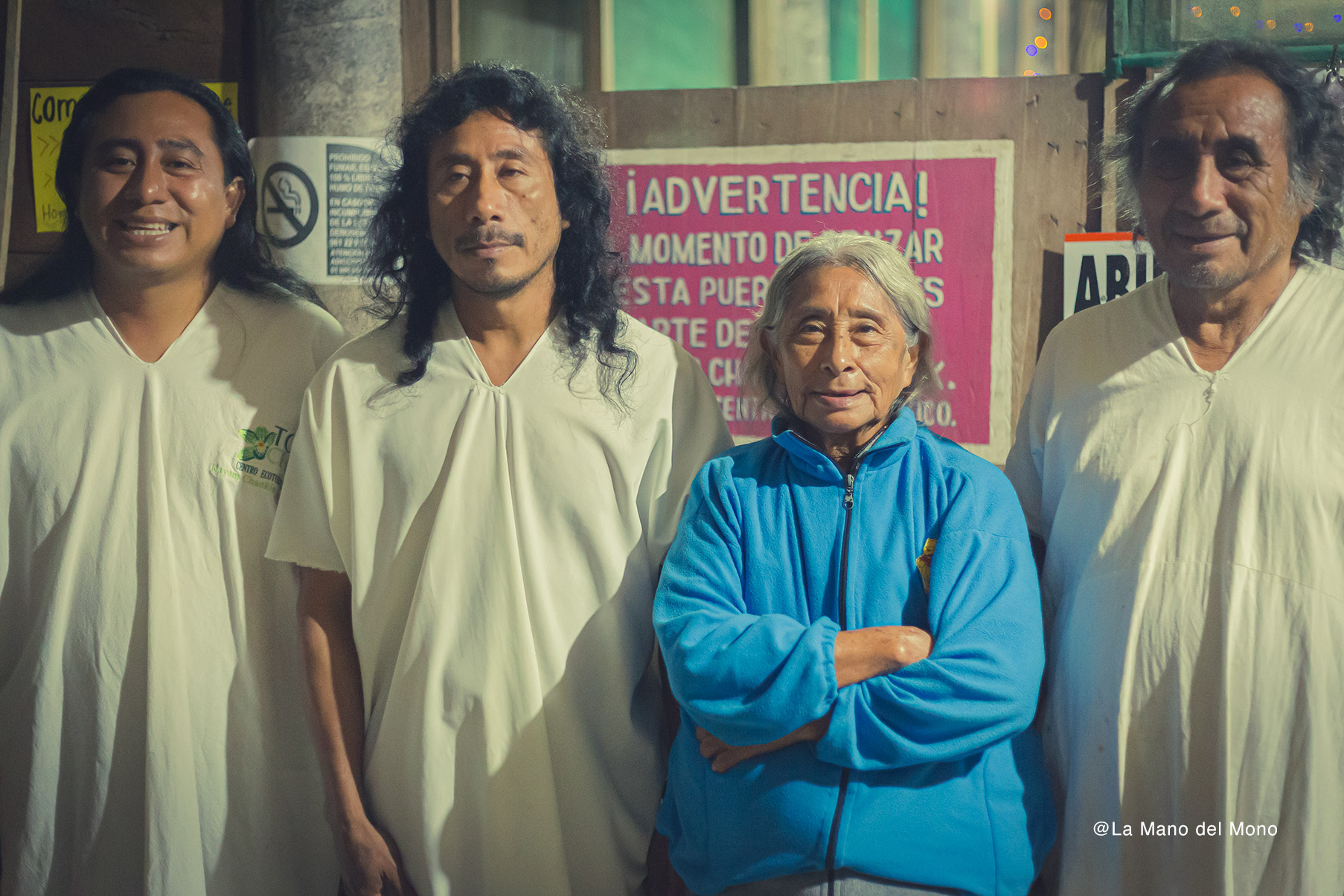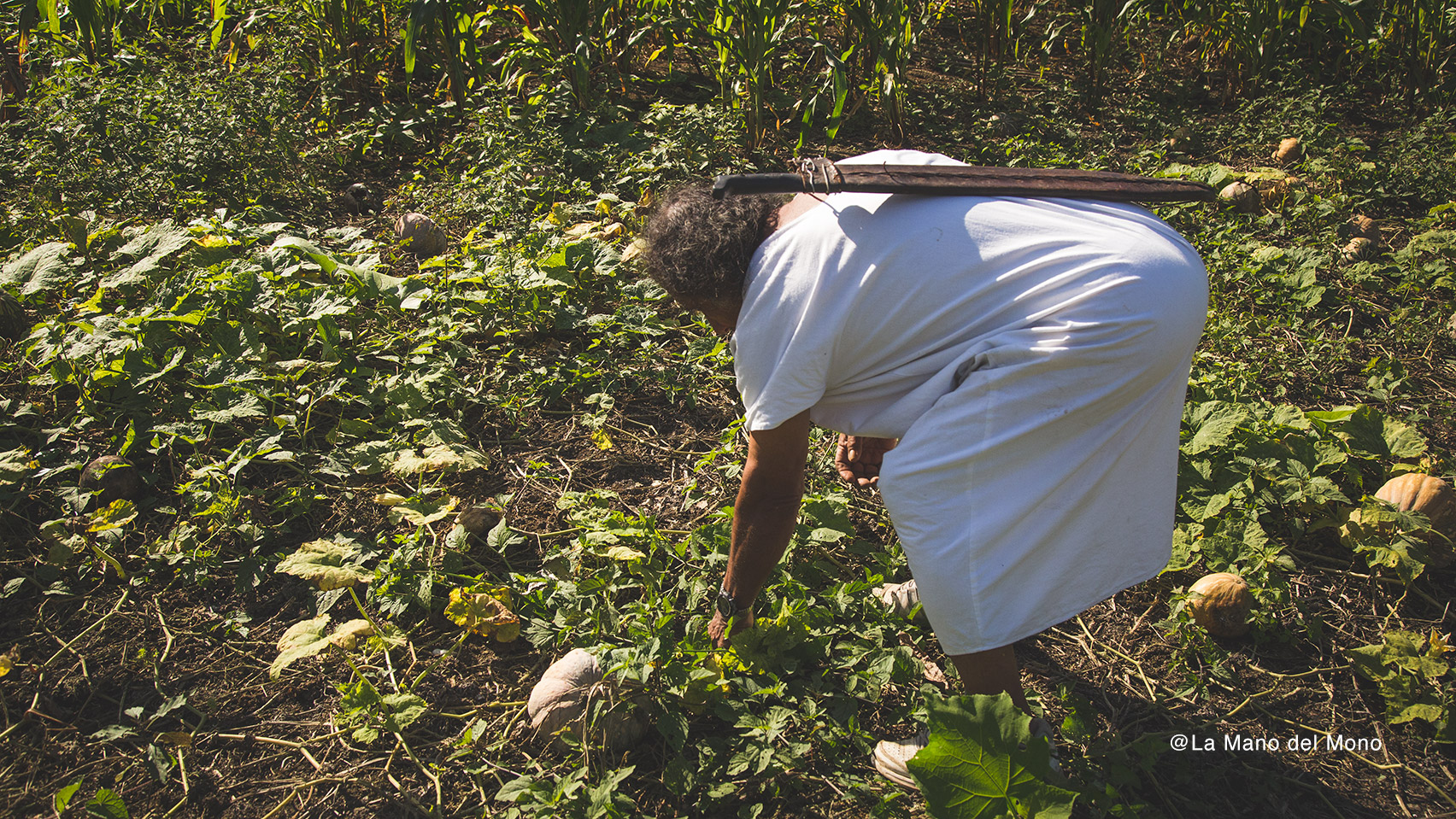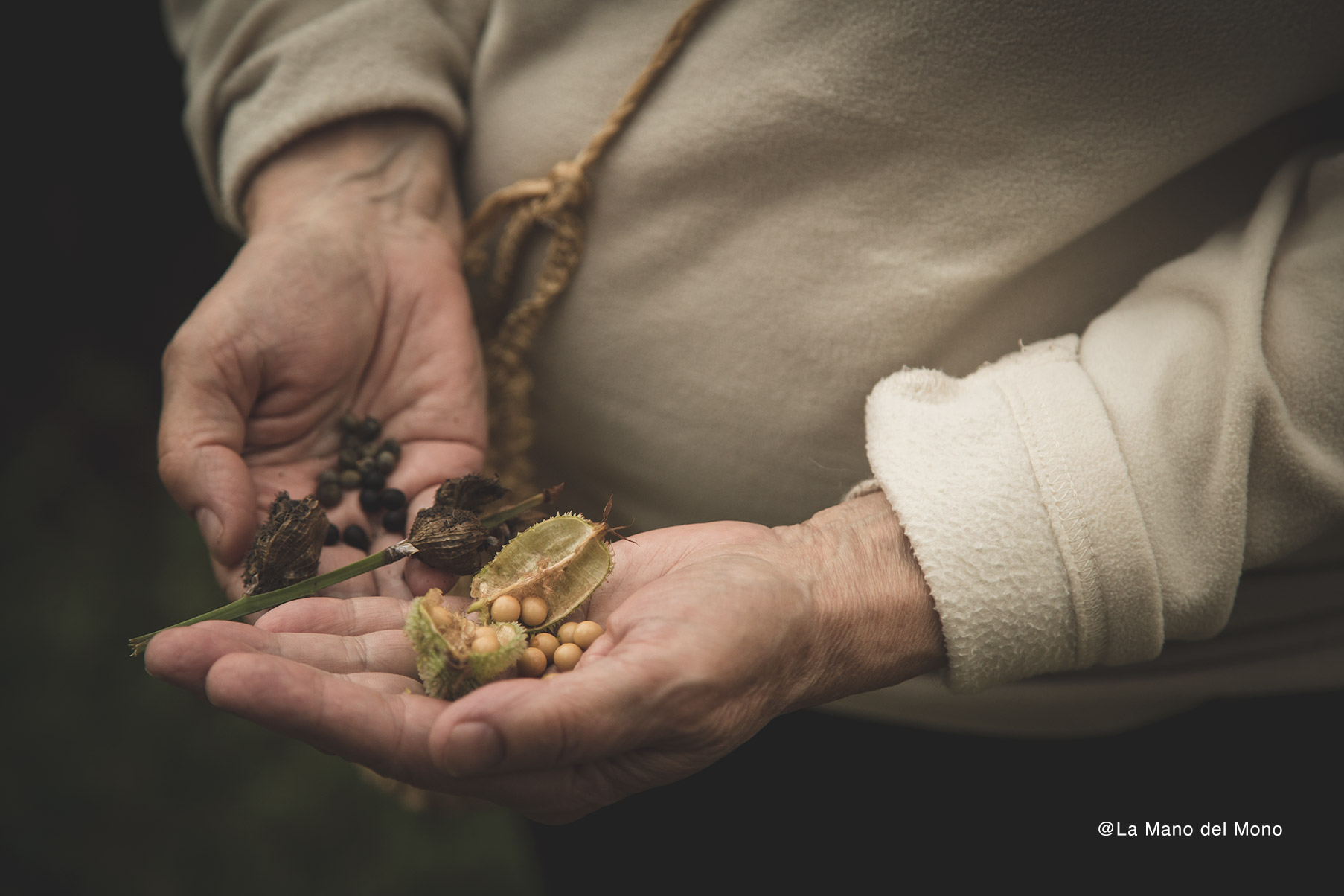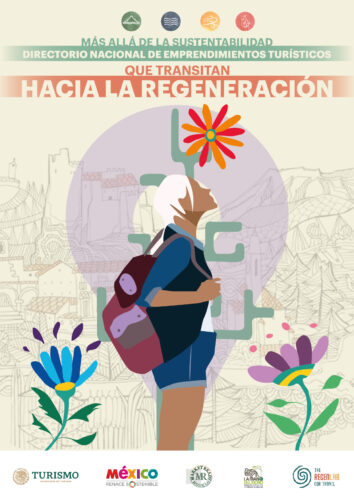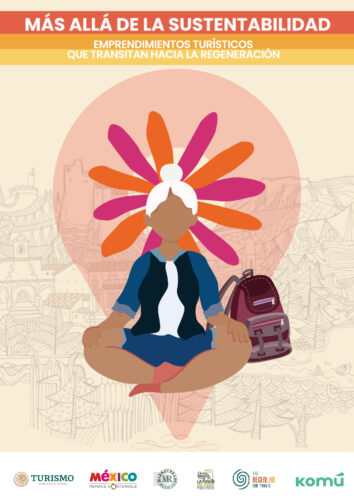(Written by Karla Alejandra Rivera Del Aguila - Lead Facilitator at La Mano del Mono)
In Mexico, approximately 50% of the potential of natural ecosystems has been lost.
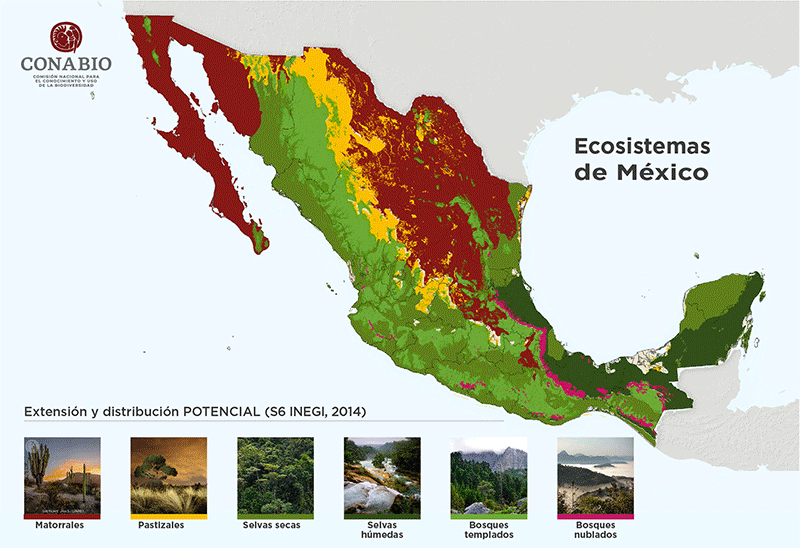
How can we move towards regeneration when we have not fully achieved sustainability?
Half a century has passed since the message about the limits of growth on Earth has been warning us. In this context, 35 years ago in the Brundtland Report, the term sustainable development was used for the first time and permeated the discourse and agendas of nations, generating important precedents in 1992, 2004, 2012 and 2015. Are we on the right path to change the scenario?
Let us imagine that we can see in a one-minute video how, over time, the potential of the extension and distribution of habitats in the world, in a country, in a region, in a community, has been reduced. Let us consider that in this transition of deterioration, the loss of biodiversity becomes a cause and effect of climate change, which confronts us with great challenges such as droughts, floods, desertification and greater loss of natural resources.
Let us think about the various voices that have called us to act to maintain healthy conditions in our environment. Let's take the consequences of the COVID 19 pandemic as that necessary stop on the way to reflect on our relationship with ourselves, with others and with nature. And above all, let us act by going beyond sustainability. What emotion does this generate in you?
Let's bet on new paths where we reconcile our societies with nature and the economy. The solution to achieve a future where the regions prosper from the local level, out of conviction and in a healthy way, is in our hands and will. We still have time to act!

Seeking the road to regeneration in tourism
In 'The Monkey's Hand' (LMDM | Latin American Center for Environmental Management AC) we are driven by the conviction that it is necessary to generate healthy conditions in environments and destinations in order to build a prosperous tourism development. That is why we get involved in actions where through different value propositions we contribute to rethink, re-signify and re-design tourism activity. We join local hands to create the global changes we need to conserve our natural resources and support community development.
In this context, during the last quarter of 2021 we contributed to the initiative led by the Ministry of Tourism of Mexico (SECTUR) to co-design the integration of the First Directory of Tourism Enterprises Moving Towards Regeneration in Mexico (DINETUR), with the support of AMT Marketing in the development of technology and communication. Service providers, organizations, working groups, collectives, companies, civil associations, destination managers and coordinators of projects in favor of sustainability were invited to participate.
The objective was based on identifying those activities, experiences and organizational processes that seek to go beyond the sustainability paradigm. And the results provided value for mapping the sustainable practices implemented in the organizations, the involvement and alliances with different actors to improve the development of their undertakings, and the expression of interest expressed to join DINETUR and move towards the regenerative tourism model.
In this first call, 98 expressions of interest were received, of which only 36% answered the complete form, which allowed us to identify the following results:
General characteristics:
- One third of the organizations integrate the female workforce (26 to 50% of the available positions).
- The main destinations managed are nature (53%) and Magical Towns (24%). Oaxaca, Chiapas and Veracruz are the states with the highest participation.
- The 34% benefits indigenous groups, especially Zapotec, Nahua and Mayan.
- At least 34% of the participating organizations manage microenterprises, whose operational needs are mainly financing (31%), as well as marketing and advertising (29%).
- +65% of visitors attended are nationals from Mexico City, State of Mexico, Jalisco, Puebla and Nuevo Leon.
- The influx of foreign visitors comes from the United States (46%), Europe (31%) and Canada (20%), and Asia (6%).
- The 49% has a website, and the most used social networks are Facebook, Instagram and YouTube.
Identification of the main sustainable tourism practices implemented in undertakings, initiatives, actions and/or projects:
- Planning of activities and facilities.- They have regulations and a code of ethics to guide the behavior of their visitors and workers; they establish their values and principles regarding environmental care; and they carry out heritage interpretation activities to raise awareness of its value and conservation for the benefit of the community and the region.
- Social contributions.- Promoting local employment and carrying out environmental education actions, as well as participating in activities to improve their environment.
- Efficient use of water.- Awareness raising, installation of energy saving devices and maintenance of installations and devices.
- Efficient use of energy.- Application of measures to take advantage of natural light and periodic maintenance of devices and installations.
- Adequate management of urban solid waste.- Separation and promotion of good practices between tourists and employees.
- Promotion of green purchasing.- Encouraging the consumption of local products and services, and the use of eco-friendly products for cleaning activities (personal and in facilities).
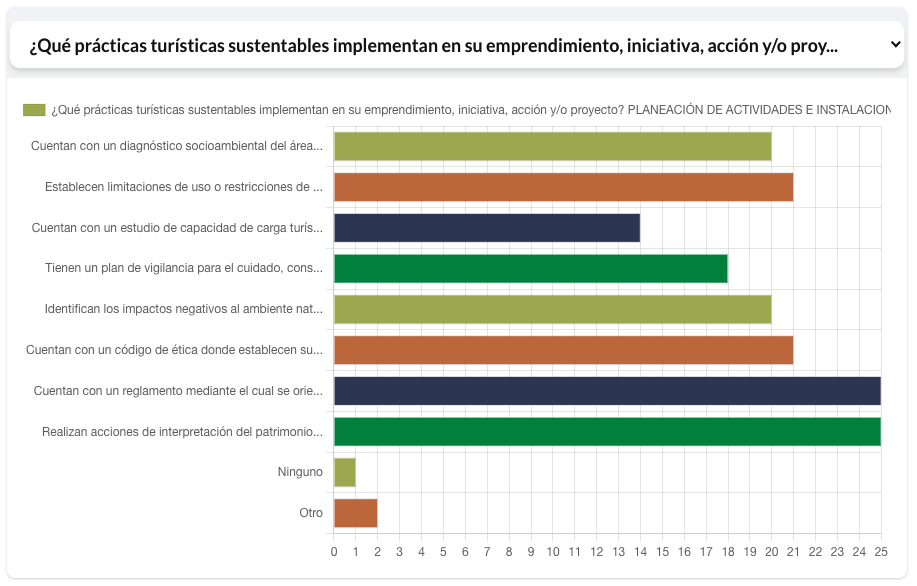
Alliances
It is identified that the main key actors that have supported or support the participating organizations are the state government, the local community, civil society, service providers, NGOs and tourists. And the sustainable practices implemented from the joint work with these actors are: adequate water management, biodiversity care, use of alternative technologies, reforestation campaigns, adequate management of urban solid waste, beach cleaning, environmental education and awareness, generation of strategic alliances, promotion of local consumption, revaluation of biocultural resources and integration of the local community.
In this process, interesting opportunities have been identified to enhance the value of conversations and synergies around regenerative tourism in Mexico, but above all to generate greater interest in the subject, which could lead to pave the way for a transition from sustainable to regenerative. In particular, synergies have been generated with experts on the subject, as is the case of RegenLab for Travel.
Thus, on a voluntary basis, LMDM is committed to the follow-up of this project, in order to identify how the areas of regeneration are practiced in the experiences and/or processes of tourism activity in Mexico that seek to go beyond sustainability.
Therefore, a second call has been designed to invite MSMEs, projects, destinations or tourism initiatives that consider that they are applying regenerative thinking.
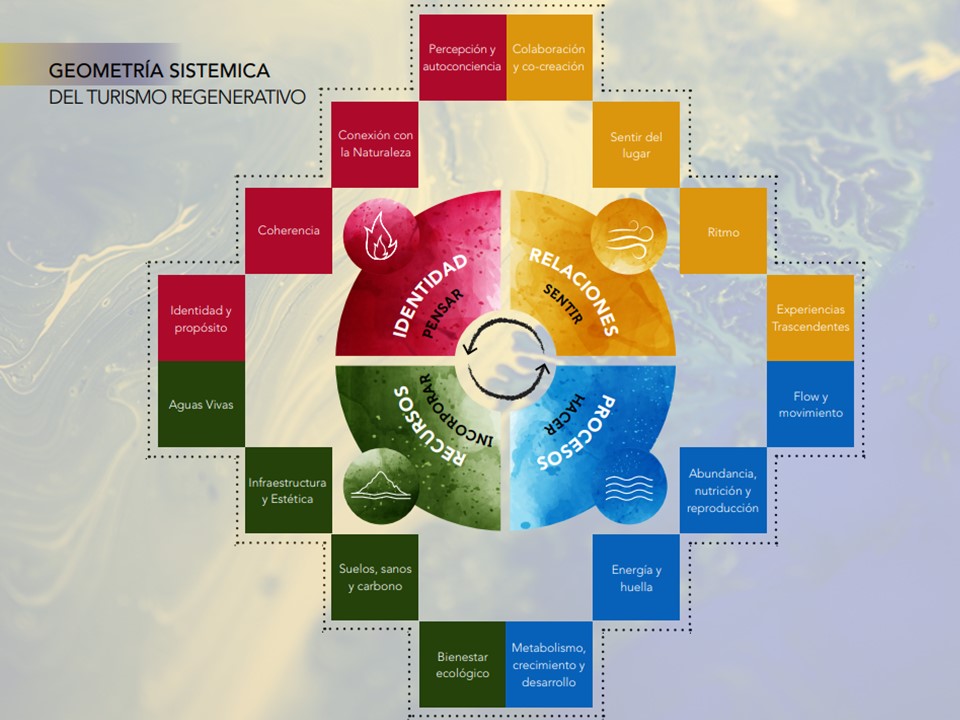
It should be noted that one way to understand how the principles of regenerative tourism can be applied to organizations is to answer a series of questions that take up the four levels of regeneration, which were used to develop the Flow Map, a self-diagnosis and design tool for regenerative tourism created by the GITR (Global Regenerative Tourism Initiative), to facilitate its implementation.
The participation of these organizations will make it possible to generate and socialize a diagnosis of the identity, relationships, processes and resources of the enterprises as fundamental principles of regenerative tourism. The result of this process should be ready by the end of April 2022.
Regeneration in motion
Regenerative tourism in Mexico is in its infancy and there is no magic recipe to achieve the transition beyond sustainability. The first DINETUR call allowed us to identify that it is necessary to go beyond sustainability, and it became an important step to start taking action by seeking to work together with various stakeholders.
There are a large number of practices and knowledge in various national tourism destinations that involve regenerative thinking. However, it is necessary to articulate them in some way in order to find solutions to the urgent problems facing the tourism sector.
Analyzing some regenerative experiences worldwide (Curitiba, Brazil; Flanders, Belgium; Torres Strait Islands, Queensland, Australia; Quinta Esencia, Buenos Aires, Argentina; and ONCE, Oaxaca, Mexico), I have identified that the main components that have led them to transform realities are:
- Constant citizen participation (there are means and conditions for effective participation).
- Participatory planning under a co-creation model (working groups, conversations, consultations, etc.).
- Paradigm shift (harnessing the positive power of tourism).
- Focus on the social rather than the financial environment.
- Statistical monitoring (impact measurement).
- Joint work among stakeholders.
- And political will and vision for the future, since the process is a long-term one.
It is worth thinking that what may work in another part of the world may not be replicable in Mexico's specific situation. Let's not wait for someone else to come up with a model, the important thing is to start changing our own actions and have the will to build a better destiny. Would you rather wait or act?
We are part of nature and depend on it to make our lives and communities thrive.
